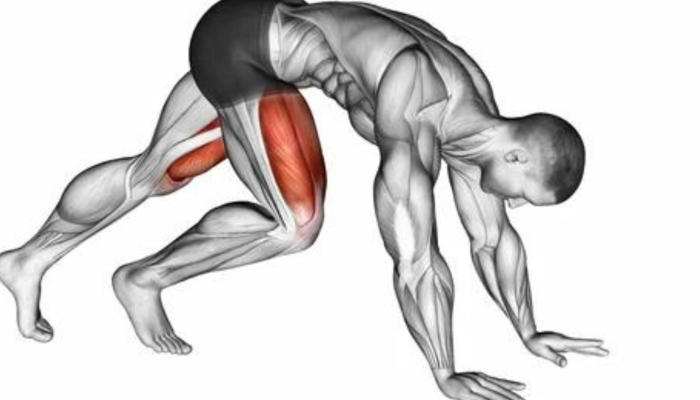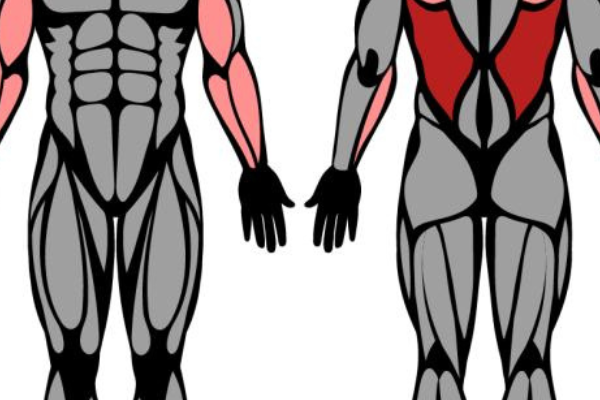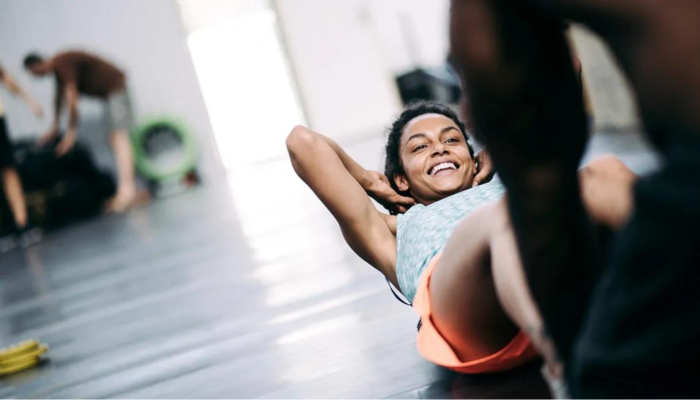
Mountain climbers are a versatile and effective exercise that targets multiple muscle groups. This high-intensity move is not only great for building strength but also for improving cardiovascular fitness. In this article, we’ll delve into what muscles mountain climbers work, how to perform them correctly, the benefits they offer, various modifications, and tips for getting the most out of this exercise.
What Muscles Do Mountain Climbers Work?
Mountain climbers primarily target the following muscle groups:
- Core Muscles: The rectus abdominis, obliques, and transverse abdominis are heavily engaged to stabilize your torso as you drive your knees toward your chest.
- Leg Muscles: The hip flexors, quadriceps, hamstrings, and calves work hard as you rapidly alternate your legs.
- Upper Body Muscles: Your shoulders, chest, and triceps are involved in maintaining a stable plank position throughout the movement.
Overall, mountain climbers provide a full-body workout that enhances both strength and endurance.
How to Do Mountain Climbers with Proper Form
Proper form is crucial to maximizing the effectiveness of mountain climbers and preventing injury. Follow these steps to perform mountain climbers correctly:
- Start in a Plank Position: Begin with your hands directly under your shoulders and your body in a straight line from head to heels.
- Engage Your Core: Keep your core tight to prevent your hips from sagging or piking.
- Drive Your Knees: Quickly drive one knee toward your chest while keeping the other leg extended. Alternate legs in a running motion.
- Maintain a Steady Rhythm: Keep your movements controlled and rhythmic, avoiding any bouncing or jerking motions.
- Breathe Steadily: Inhale and exhale rhythmically to maintain oxygen flow to your muscles.
Benefits of Mountain Climbers
Mountain climbers offer numerous benefits, making them a valuable addition to any workout routine:
- Full-Body Workout: As discussed, mountain climbers engage multiple muscle groups simultaneously.
- Cardiovascular Endurance: The rapid, repetitive motion elevates your heart rate, improving cardiovascular fitness.
- Core Strength: This exercise strengthens your core, which is essential for overall stability and injury prevention.
- Flexibility and Mobility: Mountain climbers enhance the flexibility and mobility of your hip flexors and lower body.
- Calorie Burning: Due to their high intensity, mountain climbers burn a significant amount of calories, aiding in weight loss.
Variations on Mountain Climbers
To keep your workouts interesting and challenging, try incorporating these mountain climber variations:
Incline Modification
Perform mountain climbers with your hands on an elevated surface like a bench or step. This reduces the load on your upper body, making the exercise easier.
Pushup Handles Modification
Use pushup handles to perform mountain climbers. This increases the range of motion and engages your wrist and forearm muscles more intensely.
Twist Variation
Add a twist to your mountain climbers by bringing your knee towards the opposite elbow. This variation targets your obliques more effectively.
Semicircle Variation
Perform mountain climbers in a semicircle motion, moving your knees outward in an arc. This increases the engagement of your hip flexors and outer thighs.
Decline Plank Progression
Place your feet on an elevated surface and perform mountain climbers. This increases the challenge for your core and upper body muscles.
Pushup or Burpee Progression
Combine mountain climbers with a pushup or burpee. This full-body progression increases intensity and adds variety to your workout.
Tips for Doing Mountain Climbers
- Warm Up First: Always warm up your muscles before performing high-intensity exercises to prevent injury.
- Start Slow: Begin with a slow pace to master the form before increasing your speed.
- Focus on Form: Proper form is more important than speed. Maintain a strong plank position throughout.
- Use a Timer: Set a timer to ensure you’re performing mountain climbers for a specific duration, rather than counting reps.
- Stay Hydrated: Drink plenty of water before, during, and after your workout to stay hydrated.
The Bottom Line
Mountain climbers are a powerful, dynamic exercise that works multiple muscle groups, improves cardiovascular fitness, and boosts core strength. By incorporating variations and following proper form, you can maximize the benefits of this versatile move. Whether you’re a beginner or an advanced athlete, mountain climbers are a valuable addition to your fitness routine.
Mountain Climbers: A Versatile Exercise
Mountain climbers are not just an effective full-body workout; they are also incredibly versatile. They can be adapted to fit various fitness levels and goals, from improving cardiovascular health to building muscle strength and endurance. By incorporating the different variations, you can target specific muscle groups more intensely and keep your workouts fresh and engaging.
Key Muscles Worked
- Core Muscles: Stabilize your body, enhancing overall core strength and endurance.
- Leg Muscles: Hip flexors, quadriceps, hamstrings, and calves work together to perform the rapid leg movements.
- Upper Body Muscles: Shoulders, chest, and triceps help maintain the plank position, contributing to upper body strength.
Benefits Beyond Muscle Building
Mountain climbers offer benefits that extend beyond muscle building. They improve cardiovascular endurance, increase flexibility and mobility, and help in burning calories efficiently, contributing to weight loss and overall fitness.
Tips for Maximizing Your Workout
- Warm Up: Prevent injuries by ensuring your muscles are prepared for the high-intensity movements.
- Focus on Form: Correct form is crucial to avoid injury and ensure you’re targeting the right muscle groups.
- Stay Hydrated: Proper hydration supports muscle function and overall performance.
Incorporating Variations
Adding variations like incline modifications, twist variations, and combining with pushups or burpees can target different muscle groups and prevent workout monotony. These modifications can also scale the intensity of the workout to match your fitness level and goals.
The Bottom Line
Mountain climbers are an excellent addition to any workout routine, offering a comprehensive range of benefits from muscle strengthening to cardiovascular improvements. By understanding and utilizing the proper form, incorporating variations, and following useful tips, you can effectively enhance your fitness journey.
Incorporate mountain climbers into your routine to experience the full range of benefits they offer. Whether you’re aiming to build muscle, improve endurance, or burn calories, mountain climbers can help you achieve your fitness goals.
If you have any questions for us, you can see more at: heathcarenow, Youtube, Twitter(X),…
See more of our other articles: What is Jaw Pain ?, Catabolism vs. Anabolism: What’s the Difference?, Tennis Ball Massage for Myofascial Trigger Points





